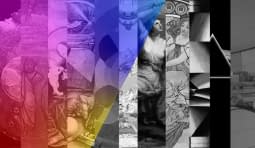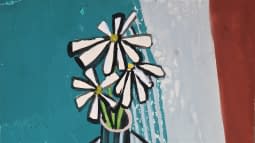The Rainbow - A (Nearly?) Endless Story...
Its appearance is like magic: the rainbow and its colour gradient from red, orange, yellow, green through blue and indigo to violet. A natural phenomenon that appears when it rains and when the sun shines at the same time, then disappears again and has inspired humankind since the beginning of time. A fascinating identity creator, a sign and symbol that is readable and recognizable worldwide, but not always welcomed. Many cultures and epochs use the rainbow and its colour gradients and reflect in the most diverse manifestations a diversity and variety that is hardly tangible in its dazzling, astonishing, overflowing abundance.
The fashion and advertising industries know them. But also in medicine and literature, in fairy tales, religions, art and cultural epochs, even in music in a transferred sense, magnificent colour gradients and rainbow colours appear. To sum up, there is hardly any field that does not use this phenomenon. Why do people actually like the rainbow? Why are we fascinated by its atmospheric appearance? What has prompted us to copy its colour spectrum and reproduce it in constantly new variations? How do we use it as a symbol, as a bridge to other worlds, as a source of identity, as a source for ideas or content? The sheer number of examples is enormous. Welcome to the first blog as an introduction to the wonderful world of the rainbow, which will spread over the course of the next few months across a wide variety of themes and centuries.
The appearance of a rainbow as a natural spectacle has already captivated early cultures. Numerous myths, stories and tales of indigenous cultures bear witness to this and show us the great importance that was and still is attached to this spectacle. Rainbows in book illumination, in religious as well as secular art from the Middle Ages to the 21st century reveal a surprising symbology depending on the context. Accurate studies of the sky and weather observations not only occupy naturalists, but also offer artists accurate visual material for naturalistic images without mystical allusions. Philosophers, psychologists, colour theorists, esotericists, dream interpreters, and musicians who assign tones to colours are inspired by what is in itself an ephemeral phenomenon to which they give form and content. The rainbow as a natural source of inspiration breaks all boundaries. It is hardly surprising that its colour gradient has long since found its way into our daily lives, into fashion and into accessories, for example in a rainbow-colored umbrella. Perhaps the painted, artificial rainbow with all its facets has already overtaken the natural weather miracle?
The next blog is dedicated to the rainbow and how it was used by non-European cultures up to the time of the Greeks and Romans, as well as in the Asian region.




